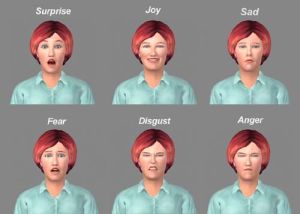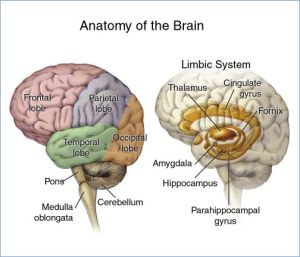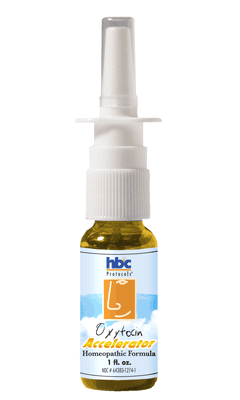Oxytocin and infidelity – By Laurel Dewey
 When it comes to fostering long-term relationships, men and women are very different. No matter what your sex, sticking around in a relationship is a challenge. Temptations occur. What, with all of the hot men and women walking, driving, skiing, windsurfing by, how does the average girl or guy manage to maintain a solid relationships at all?
When it comes to fostering long-term relationships, men and women are very different. No matter what your sex, sticking around in a relationship is a challenge. Temptations occur. What, with all of the hot men and women walking, driving, skiing, windsurfing by, how does the average girl or guy manage to maintain a solid relationships at all?
According to the Forest Institute of Professional Psychology, not very well. Their statistics indicate that 50% our first marriages, 67% of our second and 74% of our third marriages end in divorce. No surprises there.
A group of researchers at McGill University in Montreal were inspired to design a study to learn more about this phenomena. They put together a study, published in the Journal of Personality and Social Psychology in which 150 heterosexual men and women were asked to imagine a hot conversation with an attractive member of the opposite sex. They were then asked to play a fill-in-the-blank word game. When shown the word “THR_AT,” women who’d been asked to think about handsome, sexy, men tended to fill in the blank with an e creating the word “threat.” Men asked to visualize gorgeous sexy women were more likely to see the word “throat.” When offered “LO_AL” women saw “loyal,” and men saw “local.”
 The point being that the mere thought of an outside flirtation was enough to trigger beware bells in women’s brains, but not in men’s! “It’s an amazing outcome,” says John Lydon, professor of psychology and leader of the study. “The same things weren’t coming to mind for the men.”
The point being that the mere thought of an outside flirtation was enough to trigger beware bells in women’s brains, but not in men’s! “It’s an amazing outcome,” says John Lydon, professor of psychology and leader of the study. “The same things weren’t coming to mind for the men.”
So, our researchers bumped the experiment up, bringing in some serious temptation in the form of very good-looking actors and actress (pretending to be other participants signed up for the same study) who were adept in the subtle arts of flirtation. The researchers also brought in a group of unattractive subjects who were also boring.
After spending some flirt time with the hot actresses, men began to see them as viable alternatives to their current mates, and, (and this is a big AND) felt somewhat less committed to their current relationship. Dogs! On the other hand, women put in the same situation, though they clearly saw the hot flirtatious guy’s as attractive alternatives, but as threats to their current relationship and pushed them away. No, not literally.
Because they make more oxytocin, women inherently more able to distance themselves from threats to their relationships. Of course society has also encouraged them to do so from a very early age. “Men don’t have those strategies built in,” Lydon says, “but they can be trained.”
How do we get men to change? For starters, you must never ask them to suppress these wandering thoughts. It won’t work. Suppressing unwanted thoughts of any kind will only backfire. (Don’t think about pink elephants! “Don’t!” You are thinking about pink elephants. Ok, stop! . . . you get my point.)
 You need to inspire them to release their oxytocin and feeeeel the love. Yes, love. Because when they feel more love they will release more oxytocin which will make it way easier to just not see distracting stimuli. I’m not making this up, there are many studies that support this phenomena. Notice, I didn’t say anything about desire. Desire is good. Desire is a start. Desire gets their attention. Desire is first base. For all of us. The hot actors and actresses proved this, but desire is not a home run. It is not the long term solution. It is not the oxytocin connection. It is a quick fix stop gap. When men (and women) are truly in love with their partners, and making oxytocin they are much more able to ignore stimuli from attractive members of the opposite sex. Get this, even more so than women! This was proven in a recent UCLA experiment with tempting pictures.
You need to inspire them to release their oxytocin and feeeeel the love. Yes, love. Because when they feel more love they will release more oxytocin which will make it way easier to just not see distracting stimuli. I’m not making this up, there are many studies that support this phenomena. Notice, I didn’t say anything about desire. Desire is good. Desire is a start. Desire gets their attention. Desire is first base. For all of us. The hot actors and actresses proved this, but desire is not a home run. It is not the long term solution. It is not the oxytocin connection. It is a quick fix stop gap. When men (and women) are truly in love with their partners, and making oxytocin they are much more able to ignore stimuli from attractive members of the opposite sex. Get this, even more so than women! This was proven in a recent UCLA experiment with tempting pictures.
Conclusion: Women naturally make more oxytocin then men. We are little oxytocin factories. The mere act of talking induces us to release oxytocin. Men are not as adept at producing oxytocin as we are. They make a little but not nearly as much as us. Men make lots of testosterone. But, testosterone isn’t about commitment, testosterone is about fornication and only lasts a few minutes a day for a few weeks or months. By the way, the pheromones, dopamine, norepinephrine, and serotonin we all release in the early stages of love are good for about a year. Again, these hormones are about mating, not marriage. Oxytocin is about commitment. Alas, don’t fret, men can be taught how to release more of the big O. And, they should be, because when they are truly in love life is simpler for them and when life is easier for them, it is easier for us. N’est-ce pas? Practice your oxytocin releasing protocols with them! (see chapter ?) You know, look into their eyes, sing to them, get them to sing along. If the drag their feet spray some Oxytocin Accelerator under their tongue and try again.
Oxytocin is an FDA controlled substance! 
Click here to read about a sublingual Homeopatic formulation designed to enable the body to release and Accelerate its own Natural Oxytocin.
Oxytocin makes love blind?
 Can thinking wonderful thoughts about the one you love, make you less likely to find a new partner? A new study says so. The study involving 113 people in long term relationships were asked to view pictures of members of the opposite sex at which time they were asked to rate their attractiveness. Half of the group were then asked to write an essay professing their love for their significant other. The other half wrote about the happiest time in their lives. Those that wrote about their love for their significant other ruled out the most attractive people in photos when shown during the viewing portion of the study. The study respondents rejected the photos of the
Can thinking wonderful thoughts about the one you love, make you less likely to find a new partner? A new study says so. The study involving 113 people in long term relationships were asked to view pictures of members of the opposite sex at which time they were asked to rate their attractiveness. Half of the group were then asked to write an essay professing their love for their significant other. The other half wrote about the happiest time in their lives. Those that wrote about their love for their significant other ruled out the most attractive people in photos when shown during the viewing portion of the study. The study respondents rejected the photos of the  most attractive people said Dr. Jon Maner, a psychologist from Florida State University and leader the study. A current romantic perception of your partner may short circuit attraction to others Maner purports. Hence, the long held quote, “love truly may be blind”. The findings published in the journal Evolution and Human Behavior may suggest that our oxytocin production is why as humans may commit to a long term relationship with one person.
most attractive people said Dr. Jon Maner, a psychologist from Florida State University and leader the study. A current romantic perception of your partner may short circuit attraction to others Maner purports. Hence, the long held quote, “love truly may be blind”. The findings published in the journal Evolution and Human Behavior may suggest that our oxytocin production is why as humans may commit to a long term relationship with one person.
Oxytocin is an FDA controlled substance!
Oxytocin may mediate the benefits of positive social interaction and emotions
 During breastfeeding or suckling, maternal oxytocin levels are raised by somatosensory stimulation. Oxytocin may, however, also be released by nonnoxious stimuli such as touch, warm temperature etc. in plasma and in cerebrospinal fluid. Consequently, oxytocin may be involved in physiological and behavioral effects induced by social interaction in a more general context. In both male and female rats oxytocin exerts potent physiological antistress effects. If daily oxytocin injections are repeated over a 5-day period, blood pressure is decreased by 10-20 mmHg, the withdrawal latency to heat stimuli is prolonged, cortisol levels are decreased and insulin and cholecystokinin levels are increased. These effects last from 1 to several weeks after the last injection. After repeated oxytocin treatment weight gain may be promoted and the healing rate of
During breastfeeding or suckling, maternal oxytocin levels are raised by somatosensory stimulation. Oxytocin may, however, also be released by nonnoxious stimuli such as touch, warm temperature etc. in plasma and in cerebrospinal fluid. Consequently, oxytocin may be involved in physiological and behavioral effects induced by social interaction in a more general context. In both male and female rats oxytocin exerts potent physiological antistress effects. If daily oxytocin injections are repeated over a 5-day period, blood pressure is decreased by 10-20 mmHg, the withdrawal latency to heat stimuli is prolonged, cortisol levels are decreased and insulin and cholecystokinin levels are increased. These effects last from 1 to several weeks after the last injection. After repeated oxytocin treatment weight gain may be promoted and the healing rate of  wounds increased. Most behavioral and physiological effects induced by oxytocin can be blocked by oxytocin antagonists. In contrast, the antistress effects can not, suggesting that unidentified oxytocin receptors may exist. The prolonged latency in the tail-flick test can be temporarily reversed by administration of naloxone, suggesting that endogenous opioid activity has been increased by the oxytocin injections. In contrast, the long-term lowering of blood pressure and of cortisol levels as well as the sedative effects of oxytocin have been found to be related to an increased activity of central alpha 2-adrenoceptors. Positive social interactions have been related to health-promoting effects. Oxytocin released in response to social stimuli may be part of a neuroendocrine substrate which underlies the benefits of positive social experiences. Such processes may in addition explain the health-promoting effects of certain alternative therapies. Because of the special properties of oxytocin, including the fact that it can become conditioned to psychological state or imagery, oxytocin may also mediate the benefits attributed to therapies such as hypnosis or meditation.
wounds increased. Most behavioral and physiological effects induced by oxytocin can be blocked by oxytocin antagonists. In contrast, the antistress effects can not, suggesting that unidentified oxytocin receptors may exist. The prolonged latency in the tail-flick test can be temporarily reversed by administration of naloxone, suggesting that endogenous opioid activity has been increased by the oxytocin injections. In contrast, the long-term lowering of blood pressure and of cortisol levels as well as the sedative effects of oxytocin have been found to be related to an increased activity of central alpha 2-adrenoceptors. Positive social interactions have been related to health-promoting effects. Oxytocin released in response to social stimuli may be part of a neuroendocrine substrate which underlies the benefits of positive social experiences. Such processes may in addition explain the health-promoting effects of certain alternative therapies. Because of the special properties of oxytocin, including the fact that it can become conditioned to psychological state or imagery, oxytocin may also mediate the benefits attributed to therapies such as hypnosis or meditation.
Uvnas-Moberg K
Department of Physiology and Pharmacology,
Karolinska Institute,
Stockholm, Sweden.
kerstin.uvnas-moberg@fyka.ki.se
Psychoneuroendocrinology 1998 Nov; 23(8):819-35
Oxytocin is an FDA controlled substance!
Oxytocin Enhances Memories of Happy Faces
 A new study scheduled for publication in the August 1st issue of Biological Psychiatry now shows that one way oxytocin promotes social affiliation in humans is by enhancing the encoding of positive social memories. Adam J. Guastella, Ph.D. and his colleagues sought to evaluate the effects of oxytocin on the encoding and recognition of faces in humans. They recruited healthy male volunteers and in a double-blind, randomized design, administered either oxytocin or a placebo. They then presented a series of happy, angry and neutral human faces to the volunteers on a computer screen. Participants returned the following day where they were presented with a collection of faces and asked to distinguish the new faces from ones that they saw on the prior day. The results revealed that those who received oxytocin were more likely to remember the happy faces they had seen previously, more so than the angry and neutral faces.
A new study scheduled for publication in the August 1st issue of Biological Psychiatry now shows that one way oxytocin promotes social affiliation in humans is by enhancing the encoding of positive social memories. Adam J. Guastella, Ph.D. and his colleagues sought to evaluate the effects of oxytocin on the encoding and recognition of faces in humans. They recruited healthy male volunteers and in a double-blind, randomized design, administered either oxytocin or a placebo. They then presented a series of happy, angry and neutral human faces to the volunteers on a computer screen. Participants returned the following day where they were presented with a collection of faces and asked to distinguish the new faces from ones that they saw on the prior day. The results revealed that those who received oxytocin were more likely to remember the happy faces they had seen previously, more so than the angry and neutral faces.
 Dr. Guastella notes that the “findings are exciting because they show for the first time that oxytocin facilitates the encoding of positive social information over social information that is either neutral or negative.” John H. Krystal, M.D., Editor of Biological Psychiatry and affiliated with both Yale University School of Medicine and the VA Connecticut Healthcare System, comments on the findings: “The findings from Guastella and colleagues provide new evidence about a chemical system in the body that may help us to connect socially to other people. One could imagine that our ability to recall a particularly happy face at the end of a day full of social contacts could reflect an action of oxytocin.”
Dr. Guastella notes that the “findings are exciting because they show for the first time that oxytocin facilitates the encoding of positive social information over social information that is either neutral or negative.” John H. Krystal, M.D., Editor of Biological Psychiatry and affiliated with both Yale University School of Medicine and the VA Connecticut Healthcare System, comments on the findings: “The findings from Guastella and colleagues provide new evidence about a chemical system in the body that may help us to connect socially to other people. One could imagine that our ability to recall a particularly happy face at the end of a day full of social contacts could reflect an action of oxytocin.”
 Social isolation is a common psychiatric disorders. The success of oxytocin in enhancing positive social memories raises the possibility that oxytocin can be used to help people who are socially isolated and have difficulty making social connections.
Social isolation is a common psychiatric disorders. The success of oxytocin in enhancing positive social memories raises the possibility that oxytocin can be used to help people who are socially isolated and have difficulty making social connections.
Click here to comment this article 
Oxytocin and paradise engineering.
 Known as oxytocin (not to be confused with the painkiller OxyContin), the naturally occurring hormone is best known for controlling contractions during labor, but it also plays a key role in other fundamental human urges — including the desire to connect with others. “Somehow, the peptide increases trust, or alters the way individuals see each other,” says Tom Insel, director of the National Institute of Mental Health.
Known as oxytocin (not to be confused with the painkiller OxyContin), the naturally occurring hormone is best known for controlling contractions during labor, but it also plays a key role in other fundamental human urges — including the desire to connect with others. “Somehow, the peptide increases trust, or alters the way individuals see each other,” says Tom Insel, director of the National Institute of Mental Health.
Without oxytocin people would be far less inclined to seek social interaction, let alone fall in love and mate for life (or, as scientists call it, “pair bond”). The brain releases gobs of it during orgasm, mothers are awash in it during breastfeeding and, in clinical trials, a spritz of oxytocin has been shown to reduce anxiety, increase feelings of generosity and even ease the symptoms of shyness. Conversely, researchers are beginning to discover that low levels of the hormone — or the body’s faulty response to it — may contribute to severe social dysfunctions like depression and autism.
 Most previous research on oxytocin has focused on animals. (Prairie voles are famous for their oxytocin-inspired behavior: they’re fiercely monogamous lovers and caring parents.) But more recently, scientists have begun to determine how oxytocin functions in the human brain — or, more specifically, how it malfunctions. Studies have shown that people with autism tend to have low levels of oxytocin, as well as hyperactivity in the amygdala, where most oxytocin receptors are located. The amygdala is also where memories are formed, and where our brains process and assign emotional meaning to sensory information — that is, where we turn perception (seeing someone smile) into “neuroception” (understanding the feeling of happiness that the smile reflects), says Stephen Porges, a psychologist at the University of Illinois in Chicago. So, misfirings in the amygdala, in tandem with low oxytocin, may help explain why people with autism have trouble distinguishing between happy expressions and angry ones, making social interaction difficult and unpleasant.
Most previous research on oxytocin has focused on animals. (Prairie voles are famous for their oxytocin-inspired behavior: they’re fiercely monogamous lovers and caring parents.) But more recently, scientists have begun to determine how oxytocin functions in the human brain — or, more specifically, how it malfunctions. Studies have shown that people with autism tend to have low levels of oxytocin, as well as hyperactivity in the amygdala, where most oxytocin receptors are located. The amygdala is also where memories are formed, and where our brains process and assign emotional meaning to sensory information — that is, where we turn perception (seeing someone smile) into “neuroception” (understanding the feeling of happiness that the smile reflects), says Stephen Porges, a psychologist at the University of Illinois in Chicago. So, misfirings in the amygdala, in tandem with low oxytocin, may help explain why people with autism have trouble distinguishing between happy expressions and angry ones, making social interaction difficult and unpleasant.
 Early studies of oxytocin’s role in social interaction have yielded some interesting results. In a small 2006 experiment, Dr. Eric Hollander of New York’s Mount Sinai School of Medicine administered synthetic oxytocin and a placebo intravenously to 15 autistic adult patients; afterward, those who received oxytocin were better able to decipher emotions in tone of voice. Moreover, these improvements in social awareness lasted for nearly two weeks. (In 2006, Hollander filed a patent for the use of oxytocin to treat symptoms of autism spectrum disorders; the request is still pending). Investigators at Mount Sinai have also found that oxytocin nasal sprays enhance autistic patients’ ability to interpret facial expressions.
Early studies of oxytocin’s role in social interaction have yielded some interesting results. In a small 2006 experiment, Dr. Eric Hollander of New York’s Mount Sinai School of Medicine administered synthetic oxytocin and a placebo intravenously to 15 autistic adult patients; afterward, those who received oxytocin were better able to decipher emotions in tone of voice. Moreover, these improvements in social awareness lasted for nearly two weeks. (In 2006, Hollander filed a patent for the use of oxytocin to treat symptoms of autism spectrum disorders; the request is still pending). Investigators at Mount Sinai have also found that oxytocin nasal sprays enhance autistic patients’ ability to interpret facial expressions.
The effects of oxytocin nasal spray are not limited to those with autism either. In studies by Paul Zak, director of the Center for Neuroeconomics Studies in Claremont, Calif., small doses of inhaled oxytocin spray reduced anxiety and wariness of strangers in healthy volunteers; in one trial, the hormone made people feel more generous and trusting with their money.
For the oxytocin-deficient among us, the hormone is commercially available on the Internet. It ought to make love, lust or trust bloom a little faster.That’s not unlike the drug ecstasy, which triggers the release of serotonin, dopamine and oxytocin in the brain and heightens users’ feelings of trust and intimacy, even among complete strangers. Concerns that oxytocin might be similarly abused as a recreational drug seem unfounded. Though oxytocin is something of a wonder compound, it is only one piece of social support. It should be used in conjunction with: massage, talking, or “mind-body,” therapies, like breathing exercises and yoga, which help people cope with their emotions by controlling their body’s physical reaction to stress and fear. Preliminary findings are intriguing, though some oxytocin researchers remain skeptical about the notion of “paradise engineering.”
Click here to comment this article 
Oxytocin Short-circuits Fear In Humans
 Oxytocin; a brain chemical recently found to boost trust appears to work by reducing activity and weakening connections in fear-processing circuitry, a brain imaging study at the National Institutes of Health’s (NIH) National Institute of Mental Health (NIMH) has discovered.
Oxytocin; a brain chemical recently found to boost trust appears to work by reducing activity and weakening connections in fear-processing circuitry, a brain imaging study at the National Institutes of Health’s (NIH) National Institute of Mental Health (NIMH) has discovered.
 “Studies in animals, pioneered by now NIMH director Dr. Thomas Insel, have shown that oxytocin plays a key role in complex emotional and social behaviors, such as attachment, social recognition and aggression,” noted NIH Director Elias Zerhouni, M.D.. “Now, for the first time, we can literally see these same mechanisms at work in the human brain. The observed changes in the amygdala are exciting as they suggest that a long-acting analogue of oxytocin could have therapeutic value in disorders characterized by social avoidance,” added Insel.
“Studies in animals, pioneered by now NIMH director Dr. Thomas Insel, have shown that oxytocin plays a key role in complex emotional and social behaviors, such as attachment, social recognition and aggression,” noted NIH Director Elias Zerhouni, M.D.. “Now, for the first time, we can literally see these same mechanisms at work in the human brain. The observed changes in the amygdala are exciting as they suggest that a long-acting analogue of oxytocin could have therapeutic value in disorders characterized by social avoidance,” added Insel.
Inspired by Swiss scientists who last summer reported [1] that oxytocin increased trust in humans, Meyer-Lindenberg and colleagues quickly mounted a brain imaging study that would explore how this works at the level of brain circuitry. British researchers had earlier linked increased amygdala activity to decreased trustworthiness. [2] Having just discovered decreased amygdala activity in response to social stimuli in people with a rare genetic brain disorder that rendered them overly trusting of others, Meyer-Lindenberg hypothesized that oxytocin boosts trust by suppressing the amygdala and its fear-processing networks.
 To test this idea, he asked 15 healthy men to sniff oxytocin or a placebo prior to undergoing a functional magnetic resonance imaging (fMRI) scan, which reveals what parts of the brain that are activated by particular activities. While in the scanner, the men performed tasks known to activate the amygdala — matching angry or fearful faces and threatening scenes.
To test this idea, he asked 15 healthy men to sniff oxytocin or a placebo prior to undergoing a functional magnetic resonance imaging (fMRI) scan, which reveals what parts of the brain that are activated by particular activities. While in the scanner, the men performed tasks known to activate the amygdala — matching angry or fearful faces and threatening scenes.
As expected, the threatening pictures triggered strong activation of the amygdala during the placebo scan, but markedly less activity following oxytocin. The difference was especially pronounced in response to threatening faces, suggesting a pivotal role for oxytocin in regulating social fear. In addition, oxytocin dampened the amygdala’s communication with sites in the upper brainstem that telegraph the fear response. The results mirrored findings in rats [3], reported earlier this year by European scientists.
“Because increased amygdala activation has been associated with social fear in social phobia, genetic risk for anxiety and depression, and possibly with social fear in autism assessed during faces processing, this dual mode of action of oxytocin in humans suggests a potentially powerful treatment approach toward socially relevant fear,” suggest the researchers.
People with autism characteristically avert their gaze from faces. A fMRI study [4] reported earlier this year by NIMH grantee Richard Davidson, Ph.D., University of Wisconsin, and colleagues, found over-activation of the amygdala in people with autism when they were looking at faces. Meyer-Lindenberg said future studies may test oxytocin as a treatment for such social anxiety symptoms in children with autism. “Future research may also examine how oxytocin affects the amygdala in women, the mode of action of related hormones such as vasopressin, and how genetic variants in these hormones and their receptors affect brain function,” he added.
Also participating in the research were: Peter Kirsch, Christin Esslinger, Daniela Mier, Stefanie Lis, Harald Gruppe, Bernd Gallhofer, Justus-Liebig University, Giessen, Germany; Qiang Chen, Sarina Siddhanti, Venkata Mattay, NIMH Genes Cognition and Psychosis Program.
Refrences: [1] Kosfeld M, Heinrichs M, Zak PJ, Fischbacher U, Fehr E. Oxytocin increases trust in humans. Nature. 2005 Jun 2;435(7042):673-6. [2] Winston JS, Strange BA, O’Doherty J, Dolan RJ. Automatic and intentional brain responses during evaluation of trustworthiness of faces. Nat Neurosci. 2002 Mar;5(3):277-83. [3] Huber D, Veinante P, Stoop R. Vasopressin and oxytocin excite distinct neuronal populations in the central amygdala. Science. 2005 Apr 8;308(5719):245-8. [4] Dalton KM, Nacewicz BM, Johnstone T, Schaefer HS, Gernsbacher MA, Goldsmith HH, Alexander AL, Davidson RJ. Gaze fixation and the neural circuitry of face processing in autism. Nat Neurosci. 2005 Apr;8(4):519-26. Epub 2005 Mar 6.
Oxytocin is an FDA controlled substance!
Click here to read about a sublingual Homeopatic formulation designed to enable the body to release and Accelerate its own Natural (Social Viagra) Oxytocin.
Click here to comment this article 
Oxytocin and social interaction
 Without oxytocin people would be far less inclined to seek social interaction, let alone fall in love and mate for life (or, as scientists call it, ‘pair bond’). The brain releases gobs of it during orgasm, mothers are awash in it during breastfeeding and, in clinical trials, a spritz of oxytocin has been shown to reduce anxiety, increase feelings of generosity and even ease the symptoms of shyness. Conversely, researchers are beginning to discover that low levels of the hormone — or the body’s faulty response to it — may contribute to severe social dysfunctions like depression and autism.”
Without oxytocin people would be far less inclined to seek social interaction, let alone fall in love and mate for life (or, as scientists call it, ‘pair bond’). The brain releases gobs of it during orgasm, mothers are awash in it during breastfeeding and, in clinical trials, a spritz of oxytocin has been shown to reduce anxiety, increase feelings of generosity and even ease the symptoms of shyness. Conversely, researchers are beginning to discover that low levels of the hormone — or the body’s faulty response to it — may contribute to severe social dysfunctions like depression and autism.”
Oxytocin is an FDA controlled substance!
Click here to read about a sublingual Homeopatic formulation designed to enable the body to release and Accelerate its own Natural (Social Viagra) Oxytocin.
Click here to comment this article 
Oxytocin and depression – gay letter
 I came out to my family and friends when I was 23. After 5 years of lying, it felt good! Great actually. My parents, (life long Republicans!) were pretty good about it too. Apparently they suspected I was gay, not so much because I acted gay, I don’t really, but because all I ever brought home were handsome buff guys from soccer practice, or track meets, never ever girls. Conservative but loving parents they waited (against all hope) that they were wrong rather than confront me. My stupid old Grandfather was a whole other story but I won’t go into that!
I came out to my family and friends when I was 23. After 5 years of lying, it felt good! Great actually. My parents, (life long Republicans!) were pretty good about it too. Apparently they suspected I was gay, not so much because I acted gay, I don’t really, but because all I ever brought home were handsome buff guys from soccer practice, or track meets, never ever girls. Conservative but loving parents they waited (against all hope) that they were wrong rather than confront me. My stupid old Grandfather was a whole other story but I won’t go into that!Oxytocin is an FDA controlled substance!
Click here to read about a sublingual Homeopatic formulation designed to enable the body to release and Accelerate its own Natural (Social Viagra) Oxytocin.
Click here to comment this article 
-
Recent
- John McCain’s speeches show signs of clinical depression, study finds
- My Experience with Oxytocin
- Oxytocin and infidelity – By Laurel Dewey
- Kirsten Dunst talks about depression
- Angelina Jolie may be suffering from post-partum depression. 3-Question Scale for uncovering Postpartum Depression
- Matthew Mitcham battles back from depression to win Olympic gold.
- Elephant therapy for depression?
- Depression Meds May Be Prescription for Bad Driving
- The Oxytocin Connection – Part 1
- Oxytocin makes love blind?
- Prior exposure to oxytocin mimics the effects of social contact and facilitates sexual behaviour in females
- Oxytocin may mediate the benefits of positive social interaction and emotions
-
Links
- HBC Protocols
- Brain antioxidant
- Confidence Rx
- 9 Types of Depressive Disorder
- Hangover – Anti Alcohol -Antioxidant
- Solution for mid life depression
- Acid Reflux
- Adrenal and Energy Health
- Alcoholism
- Anxiety
- Arthritis (Osteo)
- Bipolar Depression Natural Solution
- Brain Cognition Stimulators – Brain
- Bone & Joint Health
- Cellular Health
- Circulatory Cardio Issues
- Daily Multi-Vitamin
- Diabetes
- Depression & Emotional Mood
- Eye Health
- Fat Inhibitors and Thermogenic
- Female Hormone Replacement
- Hair Health
- Human Growth Hormone
- Inflammation and Allergies
- Insomnia
- Intestinal Health
- Liver Health
- Migraines
- Mood Swings
- Pancreas Support
- PMS
- Prostate Health
- Male and Female Sexual Energy
- Skin Rejuvenation
- Stress
- Thyroid Health
- Weight Control
- Confidence Rx – It’s ready when you are – Natural Sex pill
-
Archives
- September 2008 (6)
- August 2008 (8)
- July 2008 (12)
- June 2008 (17)
- May 2008 (11)
- April 2008 (1)
- March 2008 (62)
- February 2008 (95)
- January 2008 (5)
-
Categories
- 1
- 5-htp
- 7-keto
- anti-alcohol antioxidant
- antidepressants
- antioxidants
- anxiety
- brain antioxidant
- carbo blocker
- coral calcium
- Depression
- depression medication
- drugs
- Healt care
- help
- hgh patch
- hypericum
- idebenone
- lithium orotate
- postpartum
- SAMe 400
- Siberian Ginseng
- St John's wort
- teen
- treating depression
- treatment
- treatments
- vitamins
-
RSS
Entries RSS
Comments RSS

